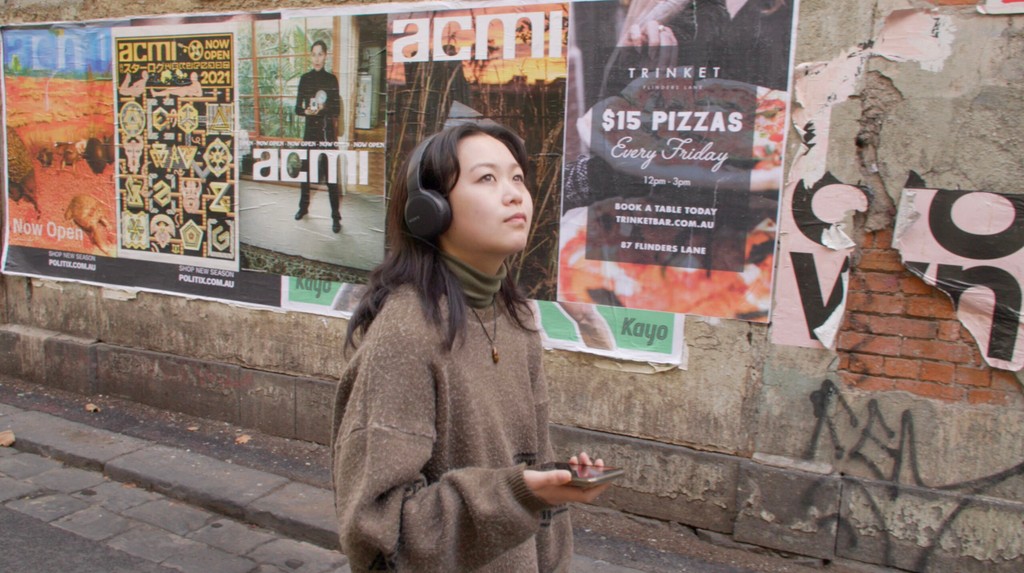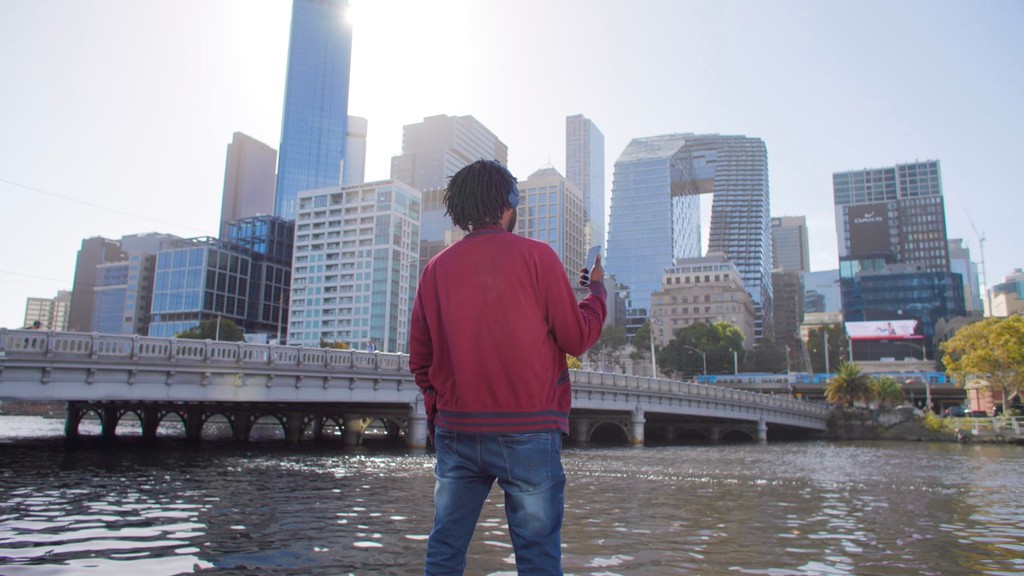The Melbourne CBD journey on the 64 Ways of Being app is called ‘Holding Multiple Worlds’ and it allows users to engage in a process of urban play, rediscovering places through Indigenous-led cross-cultural storytelling and augmented reality.
If this is the first time you have used the 64 Ways of Being app, visit this page for information about how to find the starting point of the Melbourne CBD journey and advice for getting the most out of the experience.
When you arrive at the starting point, make sure you have your headphones and fully charged phone ready to go. The journey is divided into three parts and can be comfortably completed in 2-3 hours, with plenty of places to stop for a drink and something to eat along the way.
The Melbourne CBD journey begins on the steps of Parliament House in Spring Street, moves into the city, through laneways and arcades, and finishes with a contemplative walk along the Birrarung (Yarra River). There are many historical sites to visit during your 64 Ways of Being journey where you can learn more about Melbourne’s culture and connections.
Once the site of the largest wetlands on the continent, this land has provided for its Traditional Custodians – the Bunurong Boon Wurrung and Wurundjeri Woi Wurrung Peoples of the Eastern Kulin Nation – for tens of thousands of years. They lived with and understood the land, respecting and caring for it.
The Yarra River was a sacred lifeblood for the Yalukut Weelam clan of the Boon Wurrung people or language group, and its traditional name is Birrarung. Yalukut Weelam means ‘river home’ or ‘people of the river’ (Eidelson 2014:8). Before colonisation, the Yarra River was crystal clear and flooded regularly, and the Wurundjeri-Wilam family group often camped on higher areas of ground because they understood this. However, colonists didn’t understand the river’s seasonal habits and built the city of Melbourne on its banks. After a major flood destroyed hundreds of houses, the river was widened to protect residents. The southern end of Elizabeth Street was a notorious bog in early Melbourne. Even now, during heavy downpours, the street can still flood. Since colonisation, the Yarra River has been modified many times, including altering its course in 1879, and straightening a section upstream from Princes Bridge to make it less prone to flooding.
Beyond the river, Melbourne’s landscape has changed dramatically over the years. As the city has grown, more and more trees have been removed. For example, where Parliament house is now, there was once a gum and wattle forest. The slope of the land, natural features, animals, and vegetation have all been transformed.
As players navigate different checkpoints in the Melbourne CBD journey, they can start to imagine what this place may have looked like before colonisation. Suddenly, rich layers of cultural history are revealed through storytelling.
Once you have wandered the Melbourne CBD journey, you could try one of the other journeys on 64 Ways of Being to continue your urban play adventure.

